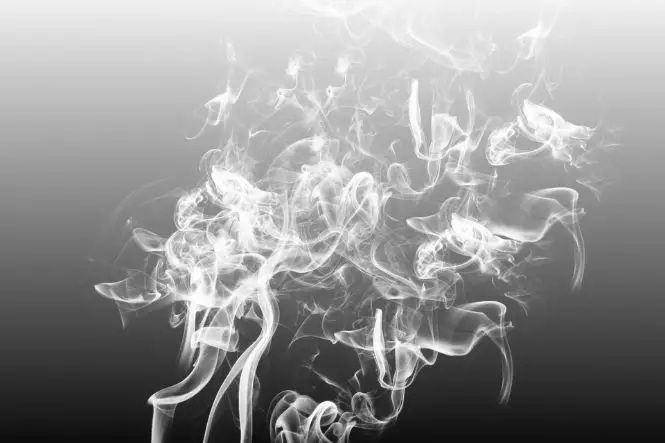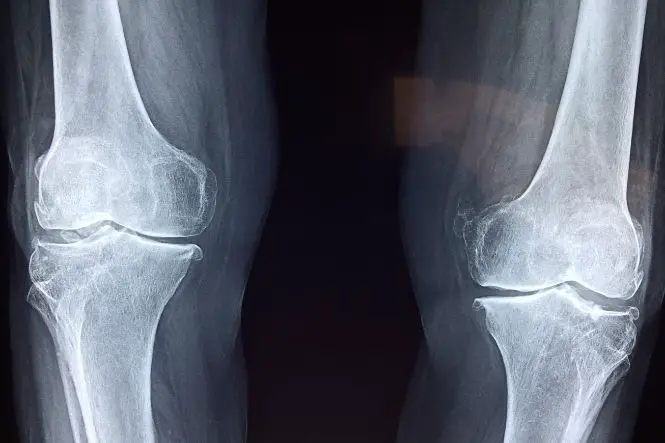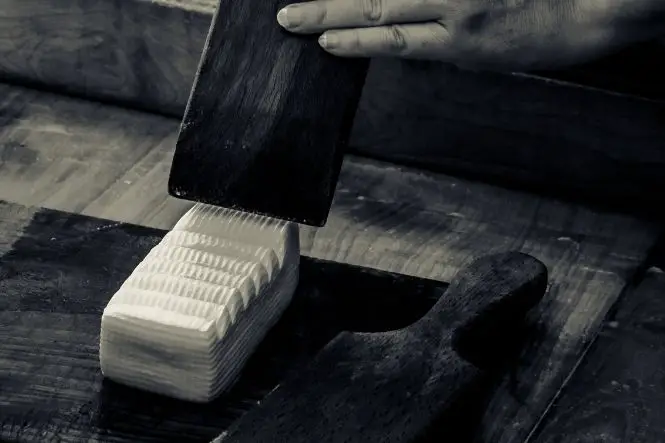When an acid is mixed with a carbonate, a type of alkaline chemical, the two chemicals react and form the gas carbon dioxide. This can be quite dramatic!
Making Gas
Pour a small amount of vinegar into a glass, add bicarbonate of soda (sodium bicarbonate) and stir. The acid and the carbonate will react, creating carbon dioxide bubbles. If you add a bit of washing up liquid at the beginning of the experiment, it will stop the bubbles disappearing as quickly.
Use some of the red cabbage pH indicator paper (see ‘Acids and Alkalis: Which Are Which?’) to check the pH of the vinegar and of some bicarbonate dissolved in water. Once the reaction has stopped, test the pH of the solution left – has it changed? If it is still acid, add a bit more bicarbonate of soda and see if it still fizzes.
If it is still alkaline, add a bit more vinegar and see if it still fizzes. How much bicarbonate of soda and vinegar would make the final solution neutral? Does using different acids (e.g. lemon juice or a solution of citric acid – available from chemist) need a different amount of bicarbonate of soda to become neutral?
To see how much carbon dioxide the reaction makes, pour the same amount of vinegar used for the first experiment into a small clean plastic or glass bottle, and then put the same amount of bicarbonate of soda used for the first experiment in a balloon, using a funnel or a cone of paper with the tip cut off. Without letting any of the bicarbonate of soda get into the bottle, stretch the neck of the balloon over the neck of the bottle, and wrap an elastic band around the neck of the bottle, as tightly as possible. Lift the balloon up so that the bicarbonate of soda falls into the vinegar.
The carbon dioxide should fill inflate the balloon. Does using lemon juice or a solution of citric acid change the amount of gas in the balloon?
Creating Heat
Mixing acids and alkalis creates heat – this is called an exothermic reaction. Put some vinegar in a polystyrene or other insulated cup, and take the temperature. Stir in some bicarbonate of soda and check the temperature every ten seconds if you. How much does the temperature rise? Does the temperature stop going up when the solution stops fizzing? Is the temperature change different if you use citric acid solution or lemon juice?
Practical Uses
Alka-Seltzer tablets treat headaches and indigestion, because they contain aspirin (a pain reliever) and bicarbonate of soda (neutralises excess acid in the stomach). They fizz in water, and this helps the aspirin and bicarbonate of soda to dissolve. The reason they fizz is because they contain citric acid. This dissolves in the water, and reacts with some of the bicarbonate of soda, releasing carbon dioxide in little bubbles. There is more bicarbonate of soda than citric acid in the tablets, so some bicarbonate of soda is still there to react with the stomach acid and make the indigestion better.
Baking powder is used in baking. It is a mixture of an alkali (bicarbonate of soda) and acid (cream of tartar – potassium hydrogen tartrate), with flour to make it easier to use. When the baking powder is dry, the two ingredients do not react. When the baking powder is wet, the acid and alkali reacts and produces carbon dioxide, which makes cakes rise.






